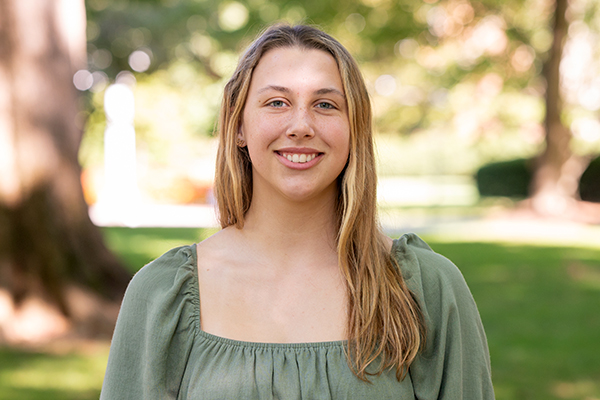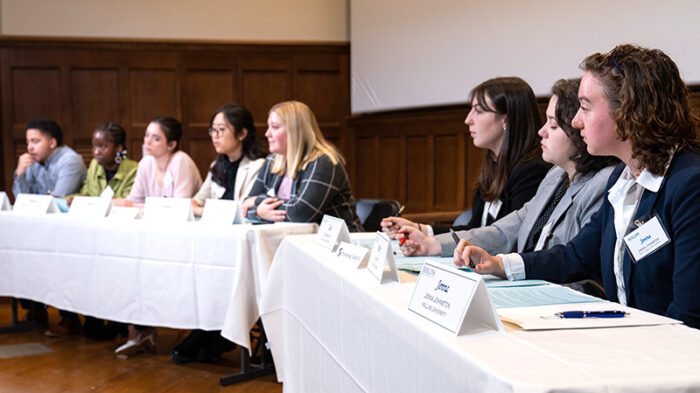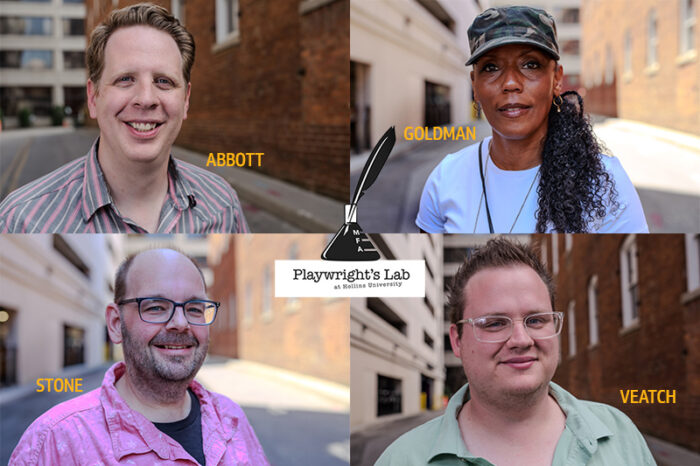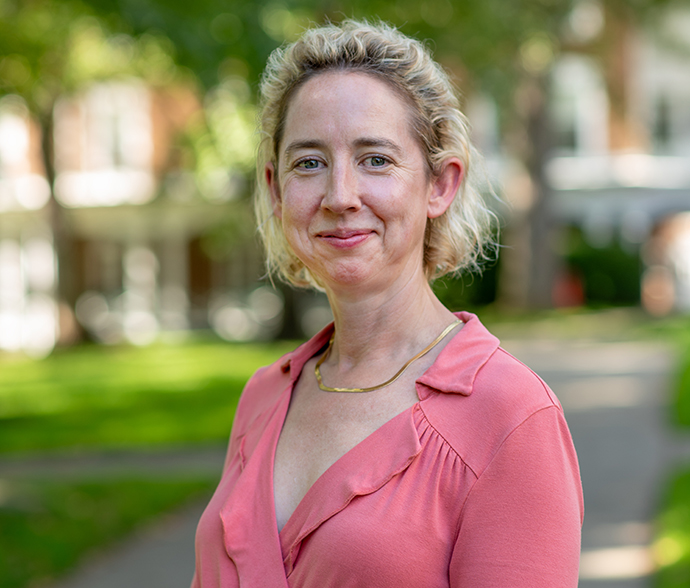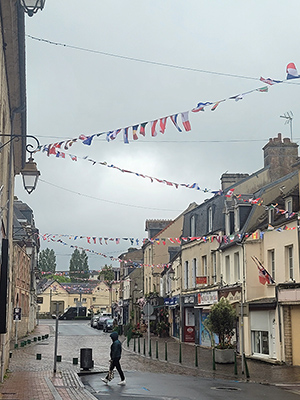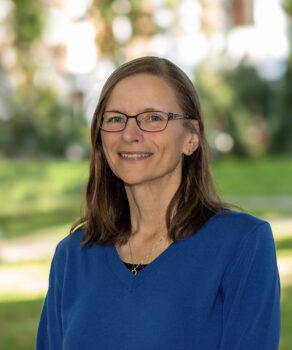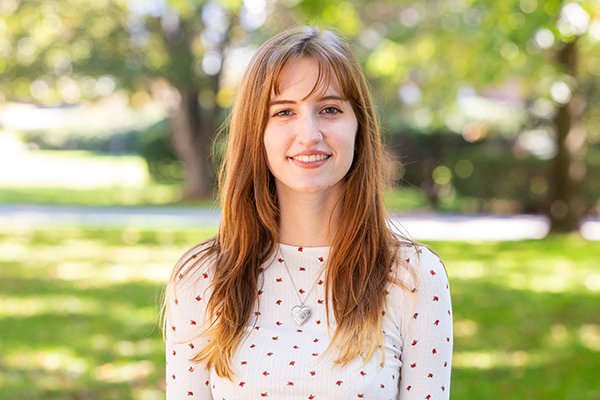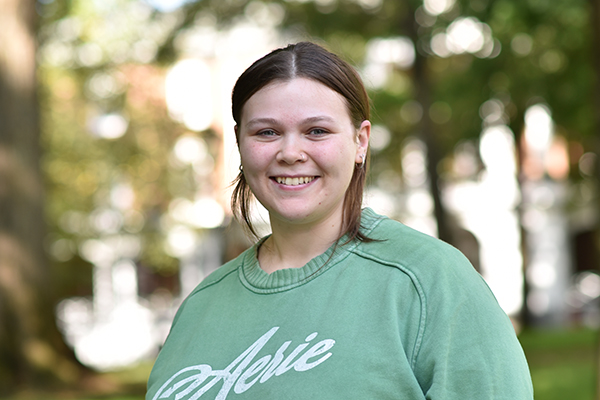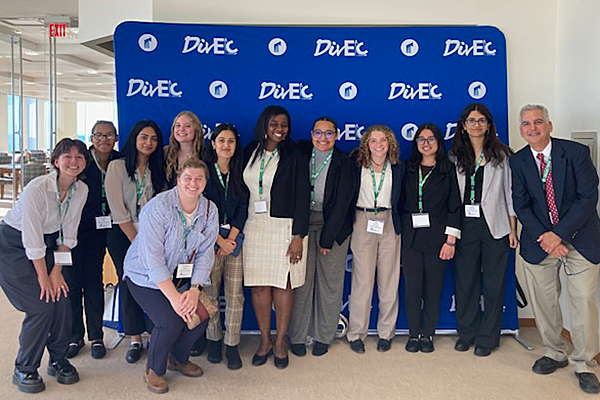Even though the treatment is still in its infancy, focused ultrasound is having a dramatic impact on patients with an array of medical diseases and conditions.
“Like a magnifying glass focusing beams of light on a single point, focused ultrasound concentrates ultrasound energy on a target in the body without harming healthy surrounding tissue,” explains the Focused Ultrasound Foundation, a prominent medical research organization. “Focused ultrasound is being explored and gaining momentum to treat and manage more than 180 devastating conditions, including Alzheimer’s, Parkinson’s, glioblastoma, and pancreatic cancer, among others. However, rigorous scientific evidence is necessary for regulatory approvals, ensuring broader access and availability.”
This summer, Cassidy Henderson ’27 got to play a significant role in furthering focused ultrasound research during a ten-week internship in the neuroSURF program, which is conducted through the Fralin Biomedical Research Institute at VTC in Roanoke. The biochemistry major from Sanford, North Carolina, worked in the noninvasive ultrasound lab led by principal investigator Wynn Legon, Ph.D., who “has been at the forefront of the use of focused ultrasound to modulate human brain activity for a decade,” according to the Institute. “He co-authored one of the seminal papers on use of the technology in humans, which showed ultrasound aimed at a specific area of the brain selectively changes neuronal activity that can boost sensory discrimination performance. It was the first demonstration that the technology can modify human brain activity to enhance perception.”
Henderson says she came to Hollins “knowing I wanted to do science. I’ve always had in interest in the human body and its systems.” For the last six years she has aspired to become a doctor because “I want to help people, and I feel useful when I am helpful.” She determined that the biochemistry concentration within the university’s chemistry major would be “a good basis for medical school. I’ve gotten to know our chemistry faculty really well and I appreciate their assistance and encouragement. Their philosophy toward students is, ‘The more we can do things on our own, the better we can do them,’ and they’re here to make sure we’re doing things correctly.”
She also chose Hollins to play on the university’s volleyball team, where she says she’s learned the importance of “time management and being responsible for your own schedule. We pride ourselves on the ‘student’ part of being a ‘student-athlete’ and being a student first, whether it’s going to classes or doing your homework. The coaches care about you an awful lot. You can talk to them, and they can help you. Initially I struggled with the transition from home to college, and they were always there for me.”
As she neared the end of her first year at Hollins, Henderson recalls “wanting to work over the summer in the scientific field because I’m very invested in my future. I’m the first one in my family to go to college, and I knew that kind of experience would be essential for a good career.” Her mom discovered Fralin’s neuroSURF program, which offered Henderson the chance to work with world-renowned researchers and use innovative technology. “As a freshman, I was very lucky to get the opportunity. When I started, I was overwhelmed because I didn’t know anything about neuroscience. But they took the time to help me understand the basis of what they were doing in the lab. I helped with case studies and did my own research.”
Henderson’s main research project for the summer was “Comparison of Babel Brain and k-WAVE for Brain Modeling.” Brain activity can be temporarily altered by focusing ultrasound through the skull, therefore “it’s very important to do computational modeling before the delivery of ultrasound to the brain. It estimates the location of the focal zone and models intensity at the focal point during the ultrasound simulation,” she states. “You can see how much ultrasound is sent versus how much reaches the target, and that’s good for safety.”
Henderson looked at two computational modeling software systems, Babel Brain and k-WAVE, which are used to calculate the properties of ultrasound by creating models of subjects’ heads during a simulated ultrasound delivery.
“We took CT and MRI scans and put them into both of those applications for comparison to see which provided the most accurate, reliable, and realistic data,” Henderson explained. Her summer study found key differences between the two, and “I hope that other investigators can use what I learned to conduct further research on which of the two apps would be the best to use moving forward. In turn, that would have an astronomical impact on the medical field.”
For her work, Henderson was recognized at the end of the summer with neuroSURF’s top award for knowledge of subject. “It was something I never would have expected,” she says. “It was a really great experience overall.” She praises Alexandria Pilot Chambers, DHSc, assistant director of operations at Fralin’s Center for Neurobiology Research, who oversees the neuroSURF program. “She was an amazing point of contact for whenever I needed help, and I got to attend lectures from all these brilliant people. She also had us do activities outside of work, so we didn’t just become lab rats. I was in a place where I could only grow.”
Henderson is excited about the potential for noninvasive ultrasound. “Neurological disorders in the brain can be difficult to treat with drugs, but ultrasound can relax the blood-brain barriers to allow medications to enter the bloodstream and treat brain disorders. That could be a huge breakthrough. Plus, noninvasive ultrasound requires no incision and no surgery. You can go in for a procedure, leave right after, and it will have no impact on your ability to drive or do anything else in your life.”
For Henderson, this opportunity for progress also resonates on a personal level. One of the main reasons she chose the neuroSURF program is that her grandfather suffers from Parkinson’s Disease. “With ultrasound,” she believes, “we can move mountains in terms of brain disease in general.”
Next summer, Henderson plans to participate in the cardioSURF program at Fralin, which offers hands-on experience in cardiovascular research and cutting-edge image technologies. “I’d like to keep doing research because that’s what medical schools like to see. I also want to make an impact. I think cardioSURF would be a great next step to take. They have a project underway that’s focused on women and labor contractions that I think is so interesting. I’d really like to work on that.”
After graduating from Hollins, Henderson is considering pursuing an M.D./Ph.D. program. “I’ve always wanted to practice medicine, but after the summer of doing this research, I’d like to have a role in affecting the medical community and moving it forth. With the M.D./Ph.D., you can probably do medicine part-time and research part-time. To me, that would be the best way to approach helping people who are suffering from these diseases that we’ve seen for hundreds of years but haven’t been able to treat.”



